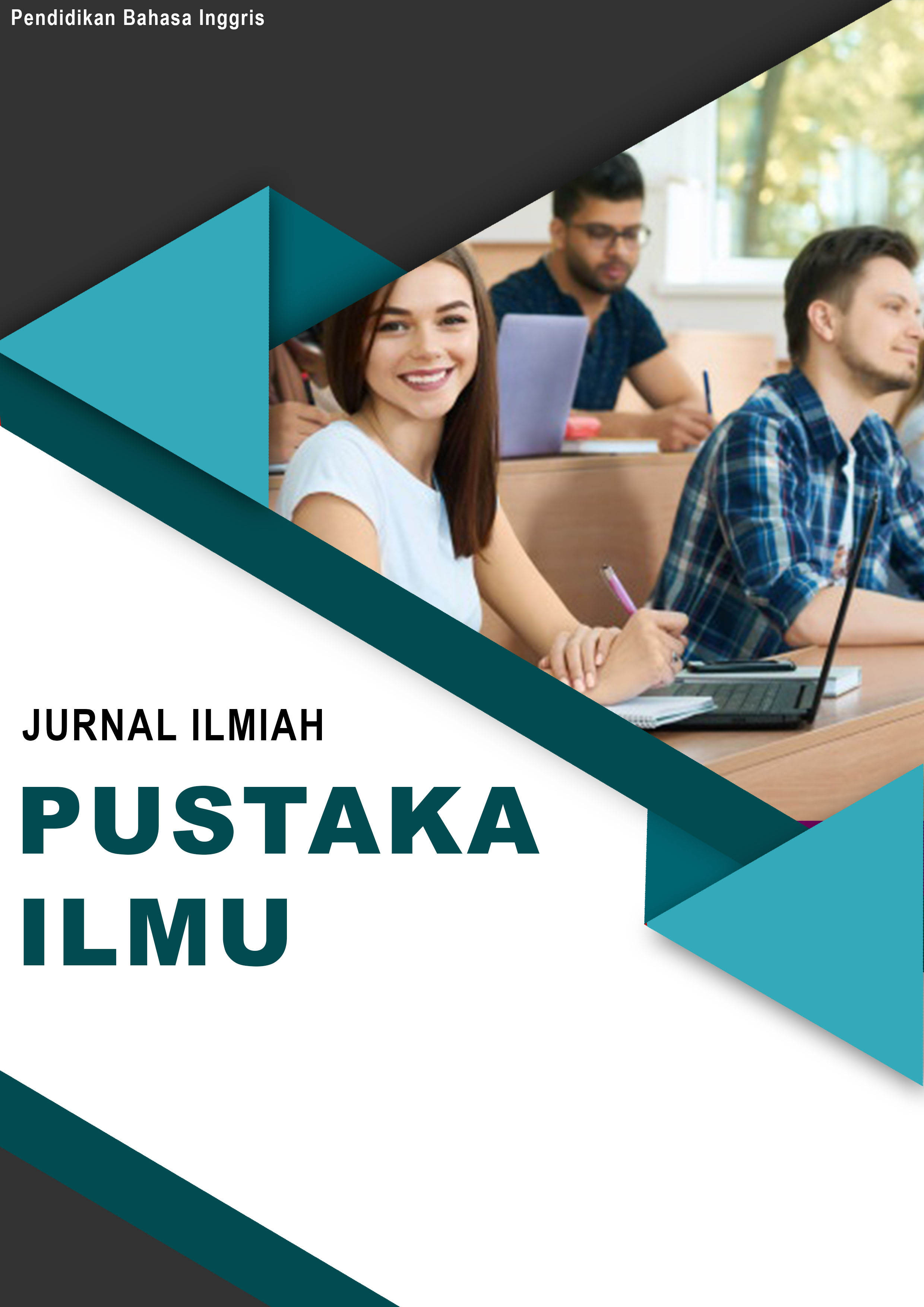ARCHETYPAL ANALYSIS IN CHARACTERS AS SEEN IN A CHRISTMAS CAROL SHORT STORY
Kata Kunci:
A Christmas Carol, Jungian Archetypes, Secondary Archetypes.Abstrak
In this research, the researchers analyzes about the archetypal analysis in characters as seen in a short story of A Christmas Carol written by Charles Dickens. The researchers choose this short story because this short story has interesting plot which tells about Christmas. This research has a purpose to find out and describe archetypal analysis theory by Carl Gustav Jung. The researchers uses descriptive method which guides the researchers to finish this research. Therefore, the researchers uses mythological approach in this research. Based on the data analysis, the result of this analysis shows that there are three categories of secondary archetypes; character archetypes, situational archetypes and symbol and association archetypes. The researchers finds the character archetypes as the hero of a powerful person who face the evil and the hero as exhibits goodness, the outcast and the devil figure. The situational archetypes are found in the quest and journey. Symbol and association archetypes are found in green color, dark color and light color.
Referensi
Afrianto, A., & Ma’rifah, U. (2020). Tubuh dan Relasi Gender: Wacana Pascakolonial Dalam Novel “The Scarlet Letter” Karya Nathaniel Hawthorne. LEKSEMA: Jurnal Bahasa Dan Sastra, 5(1), 49–63.
Al Falaq, J. S., Suprayogi, S., Susanto, F. N., & Husna, A. U. (2021). Exploring The Potentials of Wattpad For Literature Class. Indonesian Journal of Learning Studies, 1(2), 12–19.
Amelia, D. (2016). Indonesian literature’s position in world literature. Teknosastik, 14(2), 1–5.
Amelia, D. (2021). Antigone’s Phallus Envy and Its Comparison to Indonesian Dramas’ Characters: A Freudian Perspective. Vivid: Journal of Language and Literature, 10(1), 23–30.
Amelia, D., & Dintasi, F. D. (2019). Ephebophilia suffered by the main character. Teknosastik, 15(2), 81–86.
Azijah, D. P. (2020). INTERPERSONAL METADISCOURSE MARKERS IN JACINDA ARDERN’S SPEECH AT CHRISTCHURCH MEMORIAL. Universitas Teknokrat Indonesia.
Berlinda, M. (2015). Teachers’ Beliefs On The Use Of Authentic Materialis To Teach Listening. UNS (Sebelas Maret University).
Fitri, E., & Qodriani, L. U. (2016). A study on flouting maxims in Divergent novel. Teknosastik, 14(1), 32–40.
Kardiansyah, M. Y. (n.d.). Metaphysic Paradox upon Daemon Character as Delineated in Philip Pullman’s Northern Lights.
Kardiansyah, M. Y. (2017). Tubuh dan Relasi Gender: Wacana Pascakolonial Dalam Novel “The Scarlet Letter” Karya Nathaniel Hawthorne. Poetika: Jurnal Ilmu Sastra, 5(1), 58–67.
Kardiansyah, M. Y., & Salam, A. (2020a). Literary Translation Agents in the Space of Mediation: A Case Study on the Production of The Pilgrimage in the Land of Java.
Kardiansyah, M. Y., & Salam, A. (2020b). Literary Translation Agents in the Space of Mediation. International Joint Conference on Arts and Humanities (IJCAH 2020), 592–598.
Kardiansyah, M. Y., & Salam, A. (2021). Reassuring Feasibility of Using Bourdieusian Sociocultural Paradigm for Literary Translation Study. Ninth International Conference on Language and Arts (ICLA 2020), 135–139.
Kardiansyah, M. Y., & Salam, A. (2020c). The Translator’s Strategy as a Cultural Mediator in Translating Indonesian Novel into English. 4th International Conference on Language, Literature, Culture, and Education (ICOLLITE 2020), 413–418.
Kuswoyo, H. (n.d.). Advances in Language and Literary Studies Declarative Sentence Pattern In" Laskar Pelangi" And" The Rainbow Troo...
Mandasari, B. (n.d.). FACTORS INFLUENCING TEACHERS’BELIEFS ON THE USE OF AUTHENTIC MATERIALS TO TEACH LISTENING.
Mandasari, B. (2016). An Analysis of Teachers’ Beliefs toward Authentic Materials in Teaching Listening. Teknosastik, 14(1), 19–25.
Meliasari, R., Ngadiso, N., & Marmanto, S. (2018). The Picture Word Inductive Model: Its Effectiveness to Teach Writing Viewed from Students’ Interest. International Journal of Language Teaching and Education, 2(3), 248–258.
Muliyah, P., & Aminatun, D. (2020). Teaching English for Specific Purposes in Vocational High School: Teachers’ Beliefs and Practices. Journal of English Teaching, 6(2), 122–133.
Pratiwi, Z. F., & Ayu, M. (2020). THE USE OF DESCRIBING PICTURE STRATEGY TO IMPROVE SECONDARY STUDENTS’SPEAKING SKILL. Journal of English Language Teaching and Learning, 1(2), 38–43.
Rido, A. (2017).  WHAT DO YOU SEE HERE FROM THIS PICTURE?: QUESTIONING STRATEGIES OF MASTER TEACHERS IN INDONESIAN VOCATIONAL ENGLISH CLASSROOMS. TEFLIN Journal, 28(2), 193–211.
Rido, A., Kuswoyo, H., & Ayu, R. (2020). Interaction management strategies in English literature lectures in Indonesian university setting. Indonesian Journal of EFL and Linguistics, 5(2), 315–337.
Rido, A., Kuswoyo, H., & Nuansa, S. (2020). Questioning Strategies in English Literature Lectures in an Indonesian University. Lingua Cultura, 14(2), 241–253.
Rido, A., Kuswoyo, H., Suryaningsih, A. S., Nuansa, S., Ayu, R., & Arivia, R. P. (2021). Repair Strategies in English Literature Lectures in a University in Indonesia. TEKNOSASTIK, 19(1), 14–23.
Rido, A., & Sari, F. M. (2018). Characteristics of classroom interaction of English language teachers in Indonesia and Malaysia. International Journal of Language Education, 2(1), 40–50.
Sari, S. N., & Aminatun, D. (2021). STUDENTS’PERCEPTION ON THE USE OF ENGLISH MOVIES TO IMPROVE VOCABULARY MASTERY. Journal of English Language Teaching and Learning, 2(1), 16–22.
Sasalia, O. A., & Sari, F. M. (2020). UTILIZING NOVEL IN THE READING CLASS TO EXPLORE STUDENTS’VIEWPOINT OF ITS EFFECTIVENESS. Journal of English Language Teaching and Learning, 1(2), 56–61.
Simamora, M. W. B., & Oktaviani, L. (2020). WHAT IS YOUR FAVORITE MOVIE?: A STRATEGY OF ENGLISH EDUCATION STUDENTS TO IMPROVE ENGLISH VOCABULARY. Journal of English Language Teaching and Learning, 1(2), 44–49.
Styawati, S., & Mustofa, K. (2019). A Support Vector Machine-Firefly Algorithm for Movie Opinion Data Classification. IJCCS (Indonesian Journal of Computing and Cybernetics Systems), 13(3), 219–230.
Suprayogi, S., & Novanti, E. A. (2021). EFL Learner’s Literary Competence Mapping through Reader-Response Writing Assessed using CCEA GCSE Mark Scheme. Celt: A Journal of Culture, English Language Teaching & Literature, 21(1), 1.
Yulianti, T., & Sulistiyawati, A. (2020). The Blended Learning for Student’s Character Building. International Conference on Progressive Education (ICOPE 2019), 56–60.


